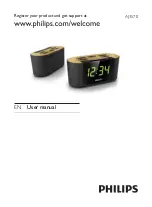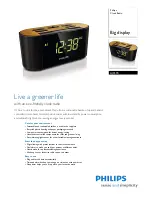
Testing the alarm:
Check once a week that the alarm is working properly by briefly pressing down the
Test/
Mute button (picture 5b)
. The alarm will beep 2 or more times and the 3 LEDs
(picture 5c)
will light up briefly. Afterwards the alarm returns to its normal operating mode.
Cleaning the alarm:
Loose dust inside the alarm can be sucked out through the vents using a vacuum cleaner.
The alarm cover can be cleaned from the outside with a lightly dampened cloth. Under no
circumstances use any domestic cleaners containing ammonia or any other chemicals
(such as cleaning agents or solvents) on or anywhere near the alarm. Do not get paint or
varnish on the alarm!
Battery and rechargeable battery information
Old batteries may not be disposed of with the unsorted househol waste Owners of used
batteries are legally obliged to recycle the batteries and can return them free of charge
to the place of sale. Batteries contain material which is harmful to the environment and
health, and must therefore be disposed of professionally.
Recycling instructions
This device must not be disposed of with unsorted household waste. Owners of old
devices are required by law to dispose of this device correctly. Contact your town council
for further information.
7. Technical data
Battery operated
3 x 1.5 V alkaline (AA/Mignon)
Calibrated acc. to
EN 50291
Alarm volume
approx. 85 dB/3 m
Permissible ambient temperature
+4 °C... +38 °C
Permissible humidity
10 %... 95 % non-condensing
Size
Ø 125 mm, height 33 mm
Life
approx. 5 years
8
9
CO concentration in air
No. minutes before alarm triggered
50 ppm
60 - 90
100 ppm
10 - 40
300 ppm
3
Trigger level in accordance with EN 50291:
Subject to technical and design changes without prior notice.
Table of functions:
Sound
Green Power LED Red Alarm LED
Yellow Fault LED Meaning
none
flashes every 60 s
off
off
working normally
beeps every 60 secs
off
off
flashes every
battery low, see 6. Maintenance
60 secs
beeps every 60 secs
off
off
constantly lit
alarm is not locked into
mounting plate
beeps every 2 secs
flashes every 2 s
flashes every 2 s
flashes every 2 s
test function
beeps every 60 secs
off
off
flashes 3 x
device faulty, replace
every 60 s
immediately
beeps every 60 secs
flashes every 60 s
flashes
off
muted
intermittent alarm
off
flashes
off
alarm triggered, see section 3
6. Maintenance
Changing the battery:
The batteries should be changed at least once a year or immediately if the low battery alert
sounds. When changing the batteries, the alarm must
not
be dismounted.
1. Open the battery compartment by pressing the release
(picture 5a)
while at the same time
sliding the compartment cover downwards
(picture 5b)
. Do not dispose of the batteries with
your household waste. The end user must recycle all used batteries. Batteries may be
returned free-of-charge to the place of sale or to your local collection point.
2. Insert 3 new batteries
the right way round (picture 6)
and make sure that the red pins are
in contact with each battery. The alarm confirms that the batteries are in place with a short
beep.
3. Close the battery compartment by placing the cover on the alarm and sliding it upwards
until it click in.
4. Test the alarm straightaway
(see Operating test)
.
We recommend the following 1.5 V alkaline batteries, size AA/Mignon:
Duracell MN 1500, Energizer E91
Under normal conditions new batteries will last for around a year – depending on the number
of tests. If the alarm is subjected for prolonged periods to high or low temperatures, or to
high air humidity, then the batteries’ useful life will become shorter.
60 seconds. The alarm will carry on working in this condition for around another 7 days.
You should nevertheless change the batteries as soon as possible.
In the event of an alarm, the device can be muted by briefly pressing the
Test/Mute button
(picture 5b)
.
IEH GmbH
An der Strusbek 40
22926 Ahrensburg/Germany
Internet: www.flammex.de
E-Mail: info@flammex.de
Summary of Contents for FlammEx profi
Page 2: ...1 2 3 4 c a b 1 2 5 6 7...







































